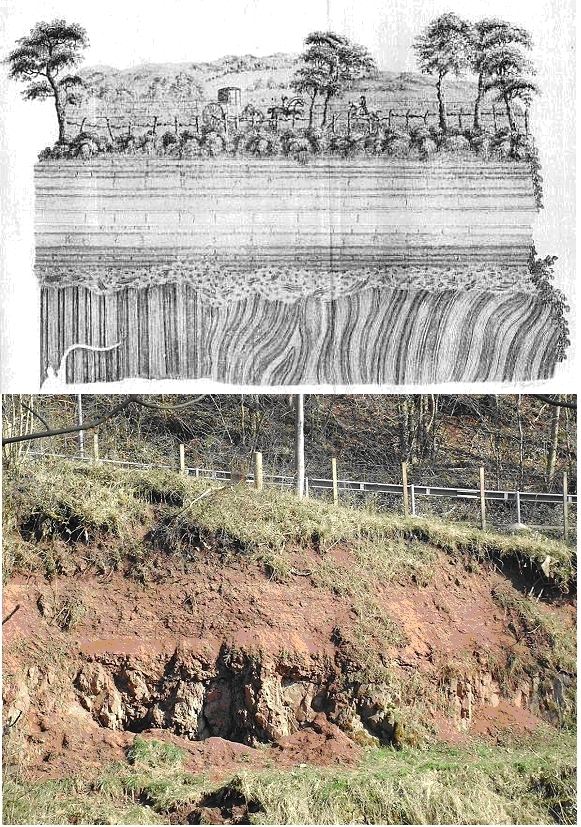 | ||
An unconformity is a buried erosional or non-depositional surface separating two rock masses or strata of different ages, indicating that sediment deposition was not continuous. In general, the older layer was exposed to erosion for an interval of time before deposition of the younger, but the term is used to describe any break in the sedimentary geologic record. The significance of angular unconformity (see below) was shown by James Hutton, who found examples of Hutton's Unconformity at Jedburgh in 1787 and at Siccar Point in 1788.
Contents
- Disconformity
- Nonconformity
- Angular unconformity
- Paraconformity
- Buttress unconformity
- Blended unconformity
- Criteria to recognize unconformity in the field
- References
The rocks above an unconformity are younger than the rocks beneath (unless the sequence has been overturned). An unconformity represents time during which no sediments were preserved in a region. The local record for that time interval is missing and geologists must use other clues to discover that part of the geologic history of that area. The interval of geologic time not represented is called a hiatus.
Disconformity
A disconformity is an unconformity between parallel layers of sedimentary rocks which represents a period of erosion or non-deposition. Disconformities are marked by features of subaerial erosion. This type of erosion can leave channels and paleosols in the rock record. A paraconformity is a type of disconformity in which the separation is a simple bedding plane with no obvious buried erosional surface.
Nonconformity
A nonconformity exists between sedimentary rocks and metamorphic or igneous rocks when the sedimentary rock lies above and was deposited on the pre-existing and eroded metamorphic or igneous rock. Namely, if the rock below the break is igneous or has lost its bedding due to metamorphism, the plane of juncture is a nonconformity.
Angular unconformity
An angular unconformity is an unconformity where horizontally parallel strata of sedimentary rock are deposited on tilted and eroded layers, producing an angular discordance with the overlying horizontal layers. The whole sequence may later be deformed and tilted by further orogenic activity. A typical case history is presented by the paleotectonic evolution of the Briançonnais realm (Swiss and French Prealps) during the Jurassic.
Paraconformity
A paraconformity is a type of unconformity in which strata are parallel; there is no apparent erosion and the unconformity surface resembles a simple bedding plane. It is also called nondepositional unconformity or pseudoconformity.
Buttress unconformity
A buttress unconformity occurs when younger bedding is deposited against older strata thus influencing its bedding structure.
Blended unconformity
A blended unconformity is a type of disconformity or nonconformity with no distinct separation plane or contact, sometimes consisting of soils, paleosols, or beds of pebbles derived from the underlying rock.
Criteria to recognize unconformity in the field
Criteria based on observation in a single outcrop include:
